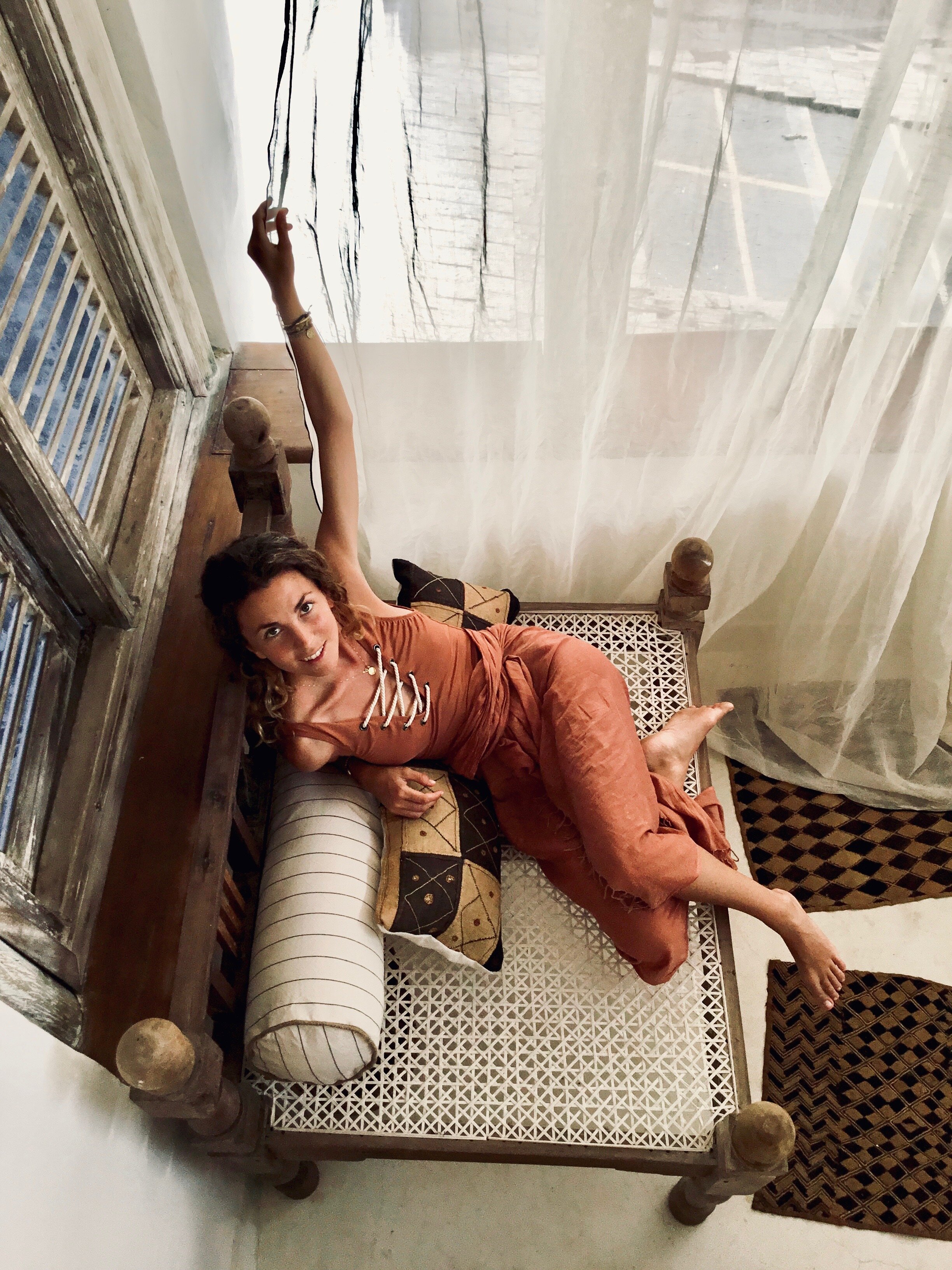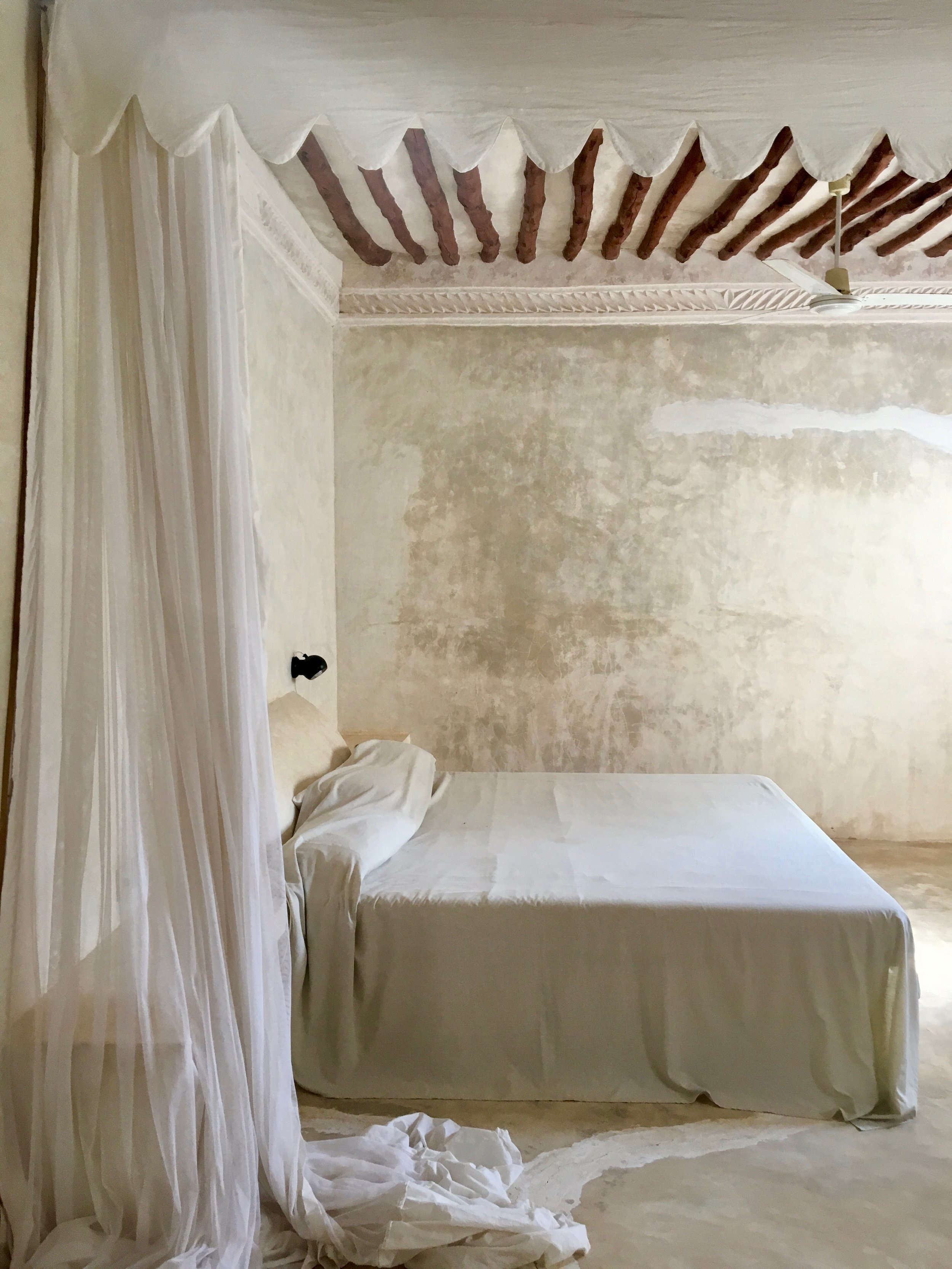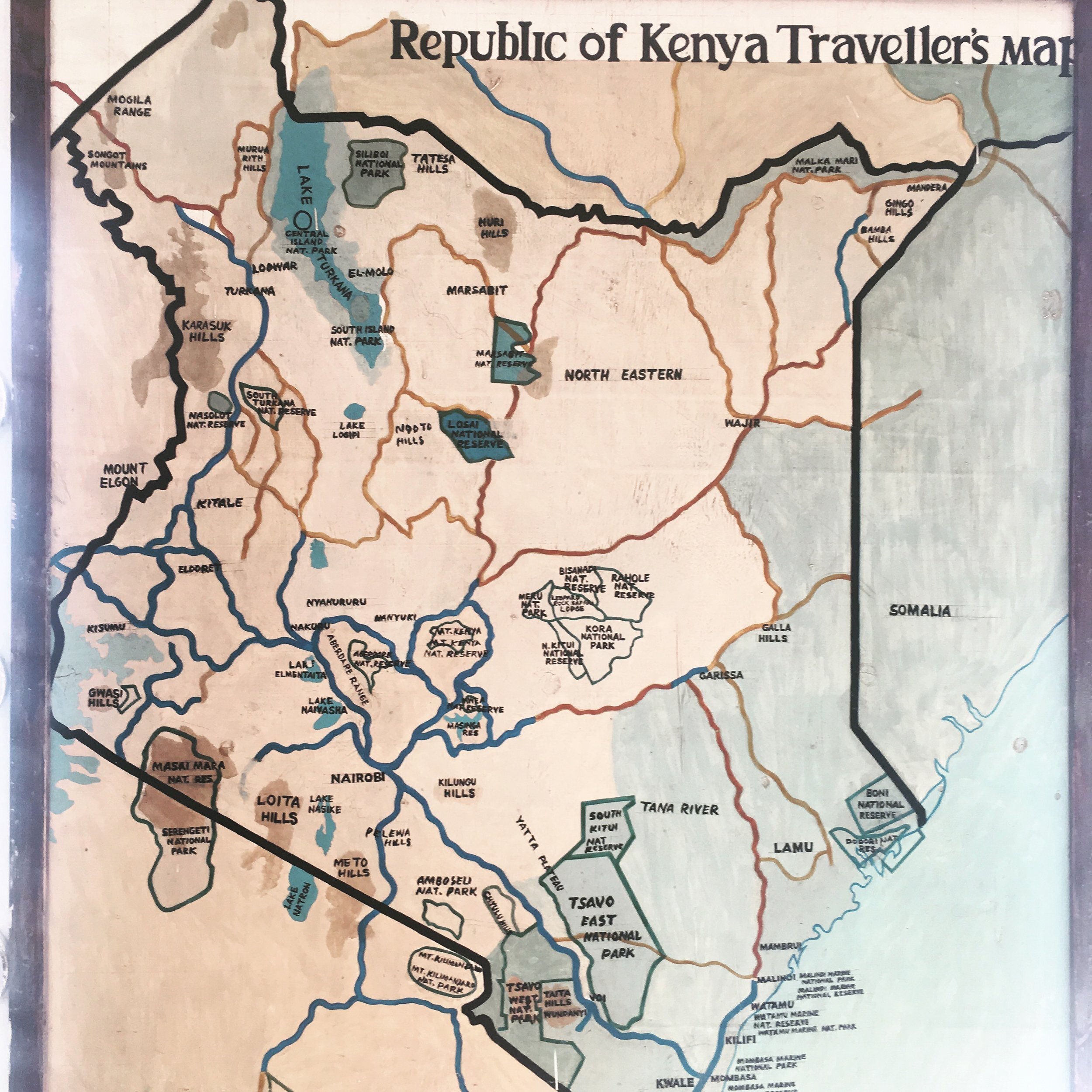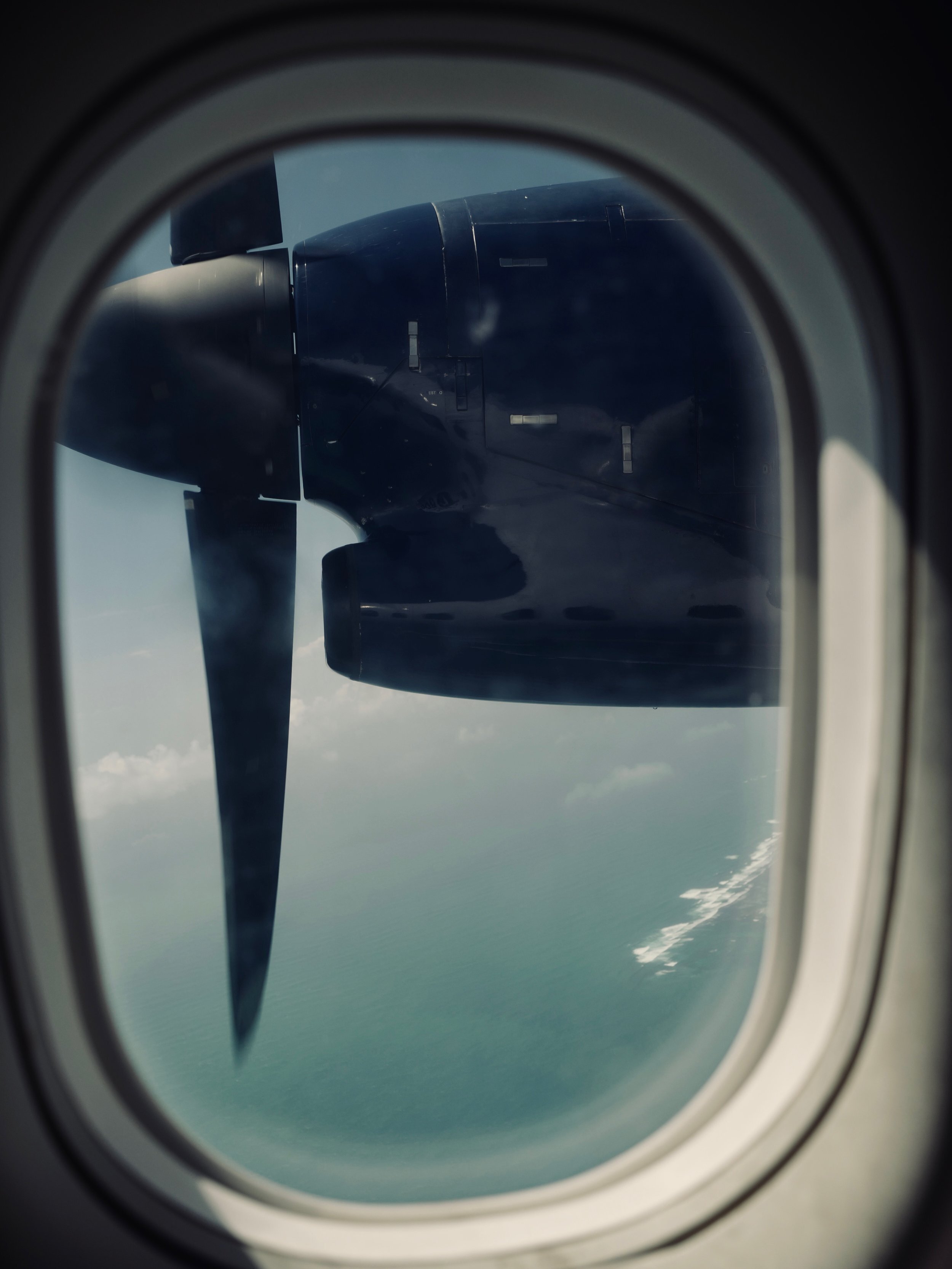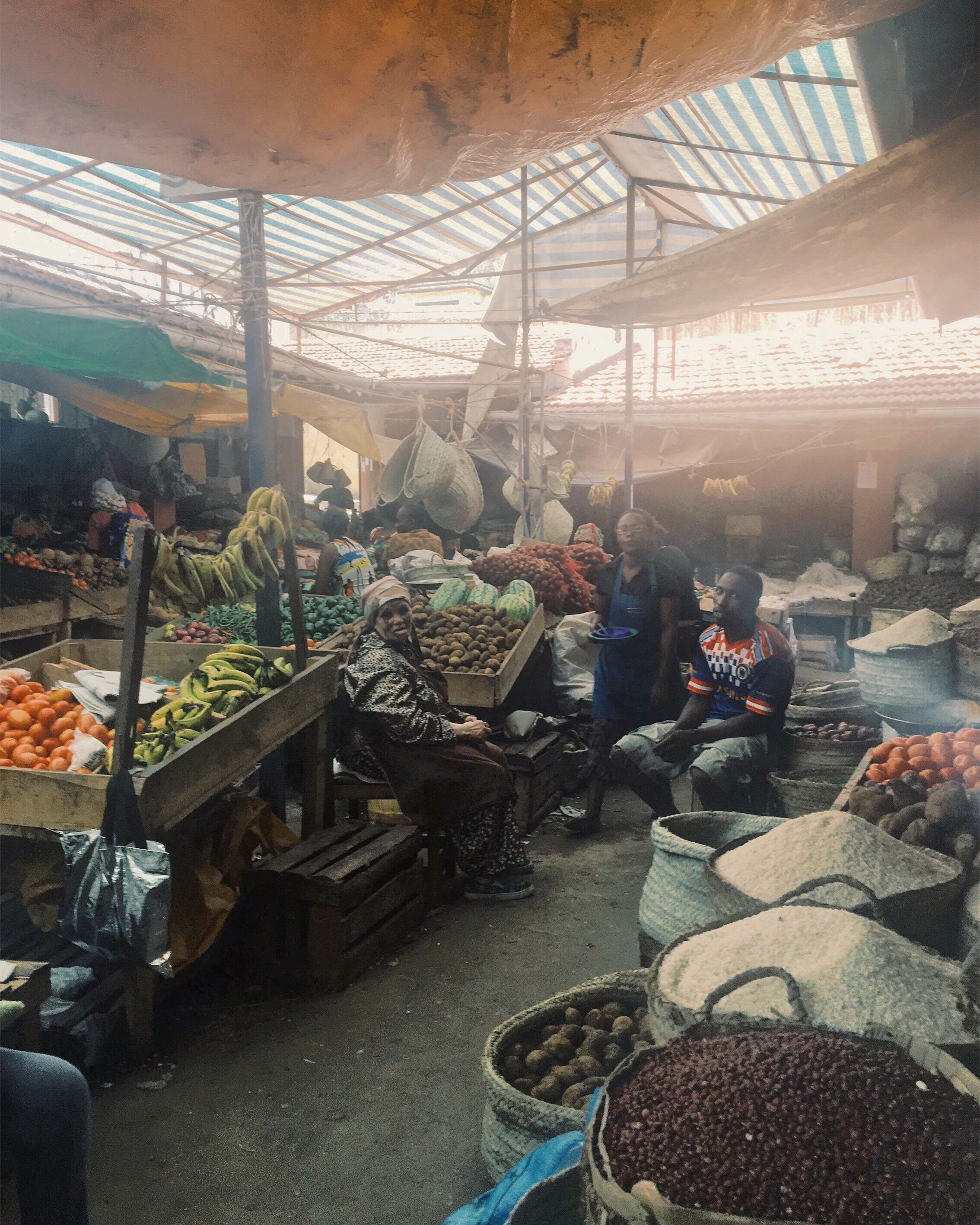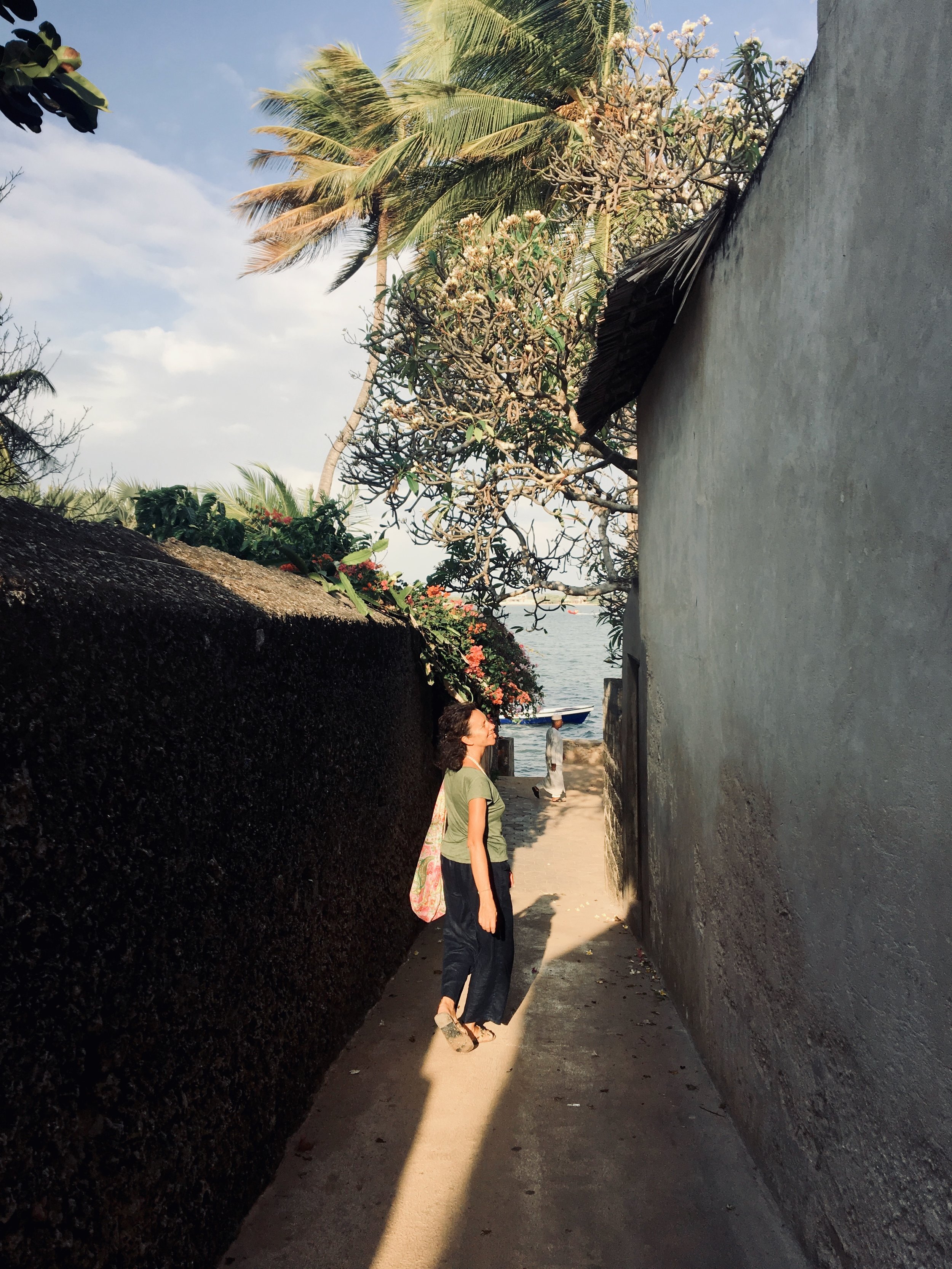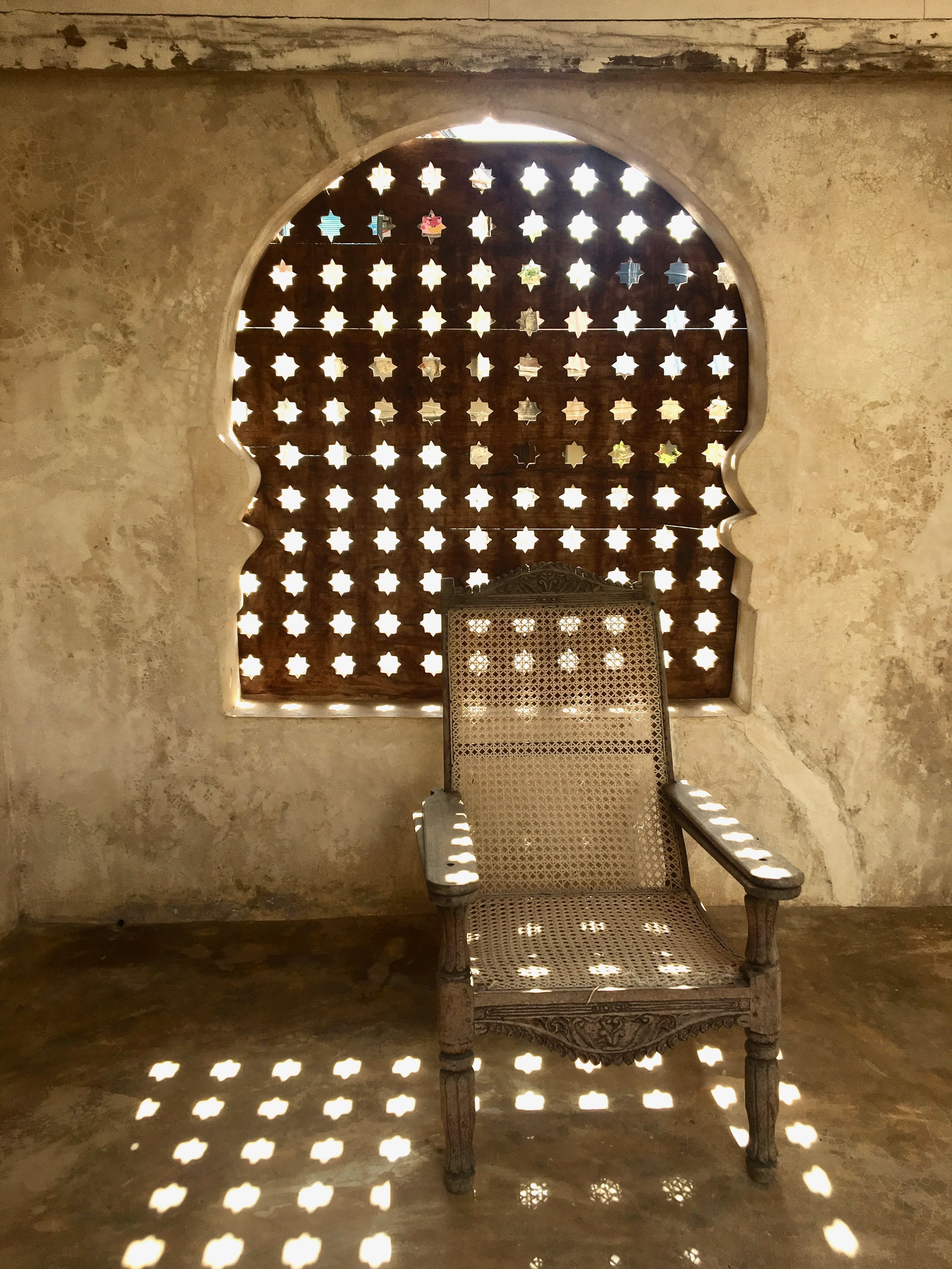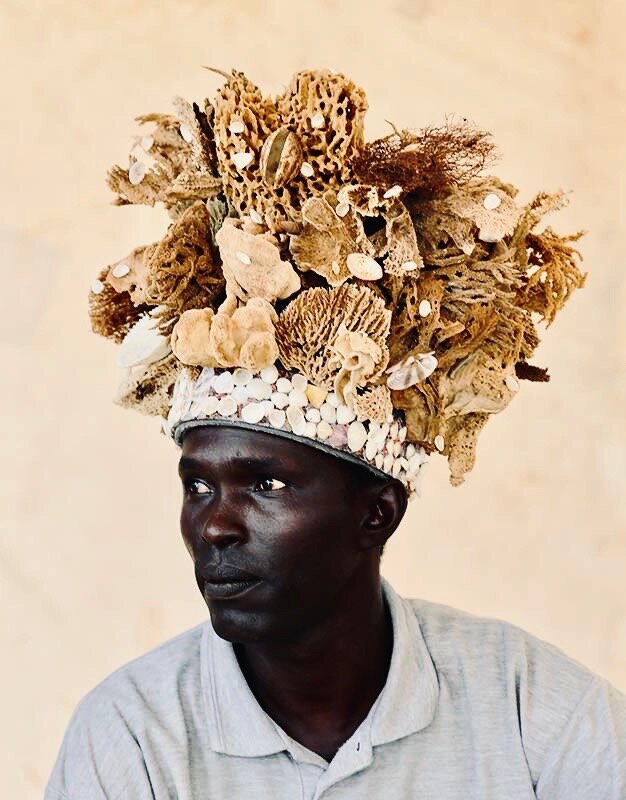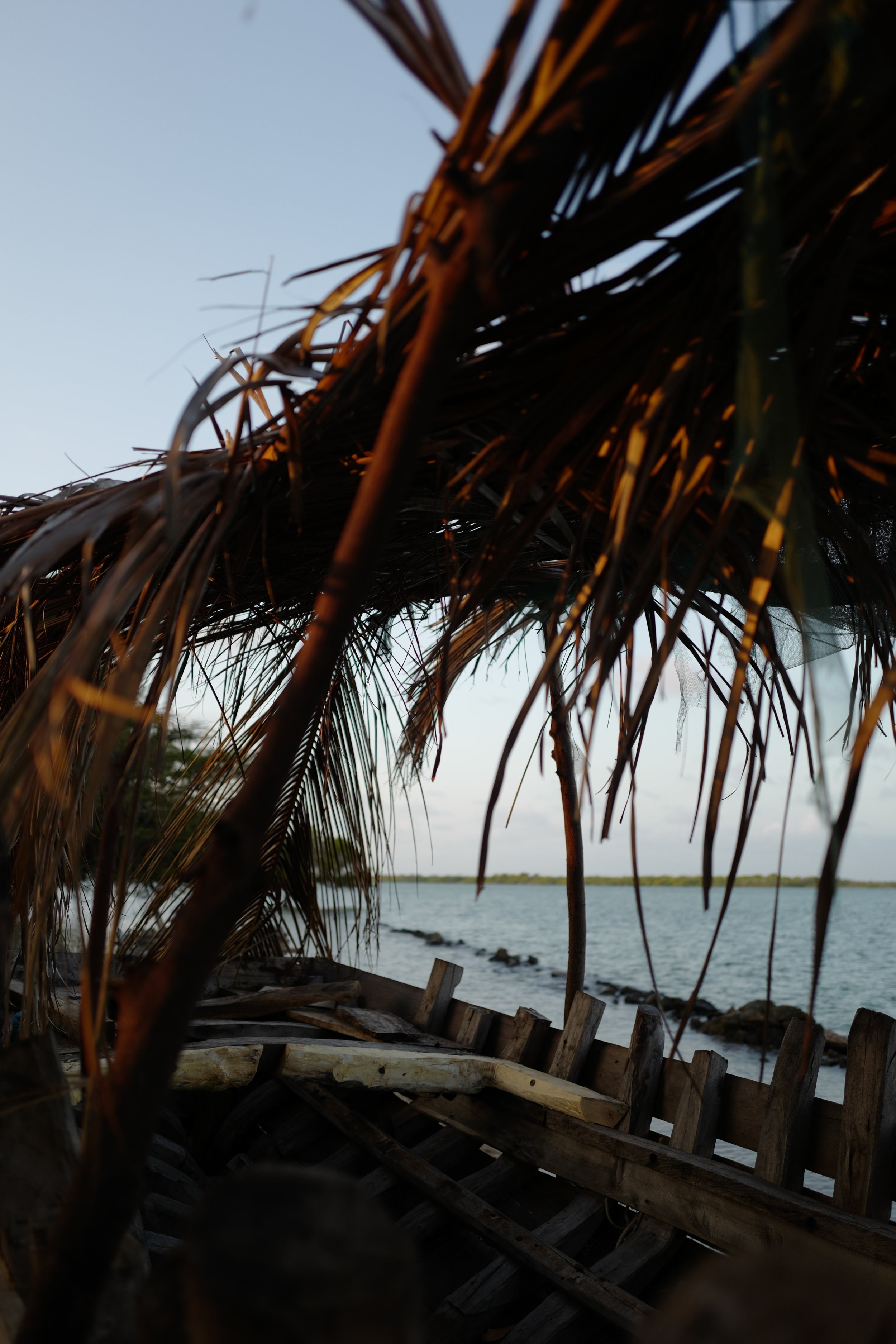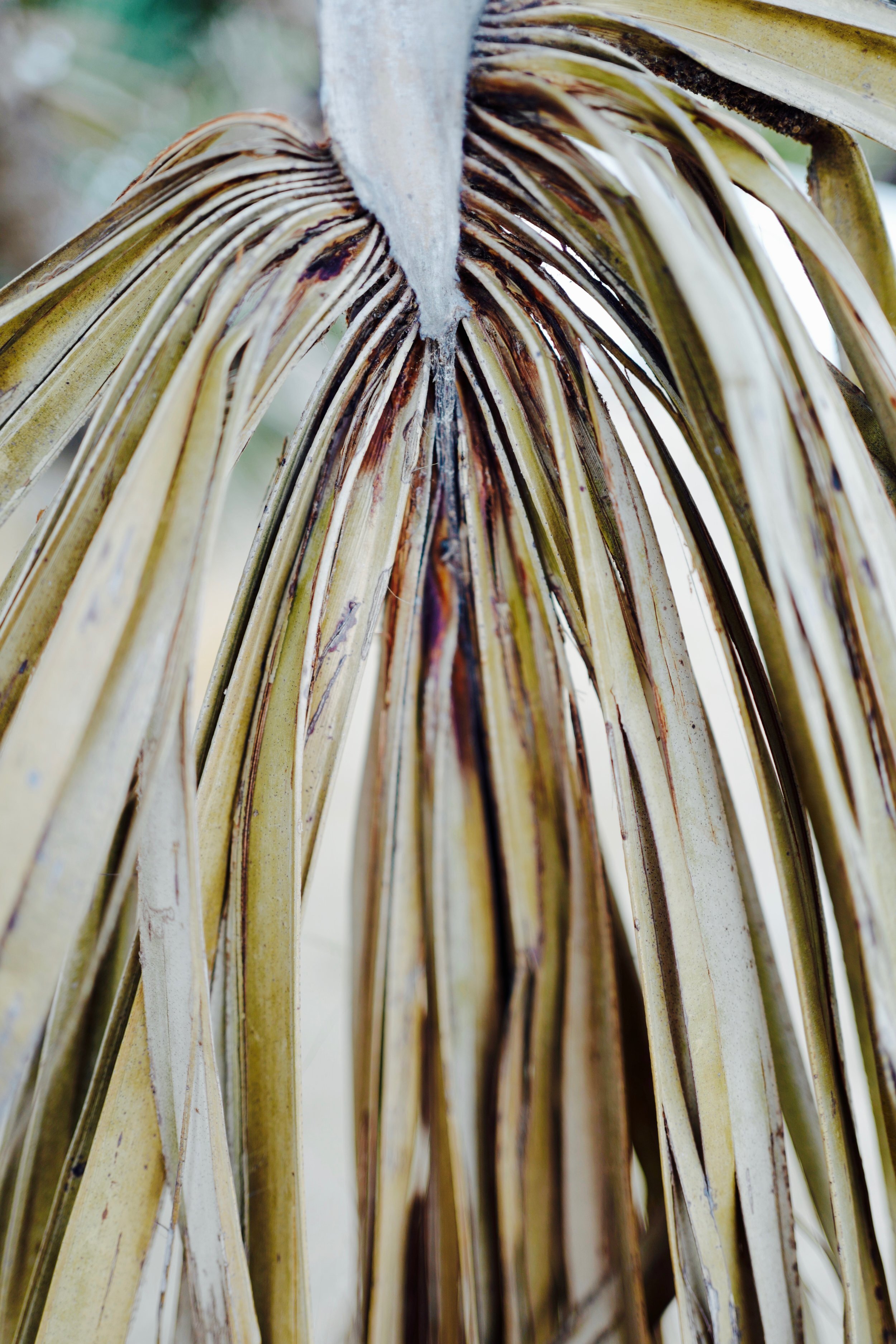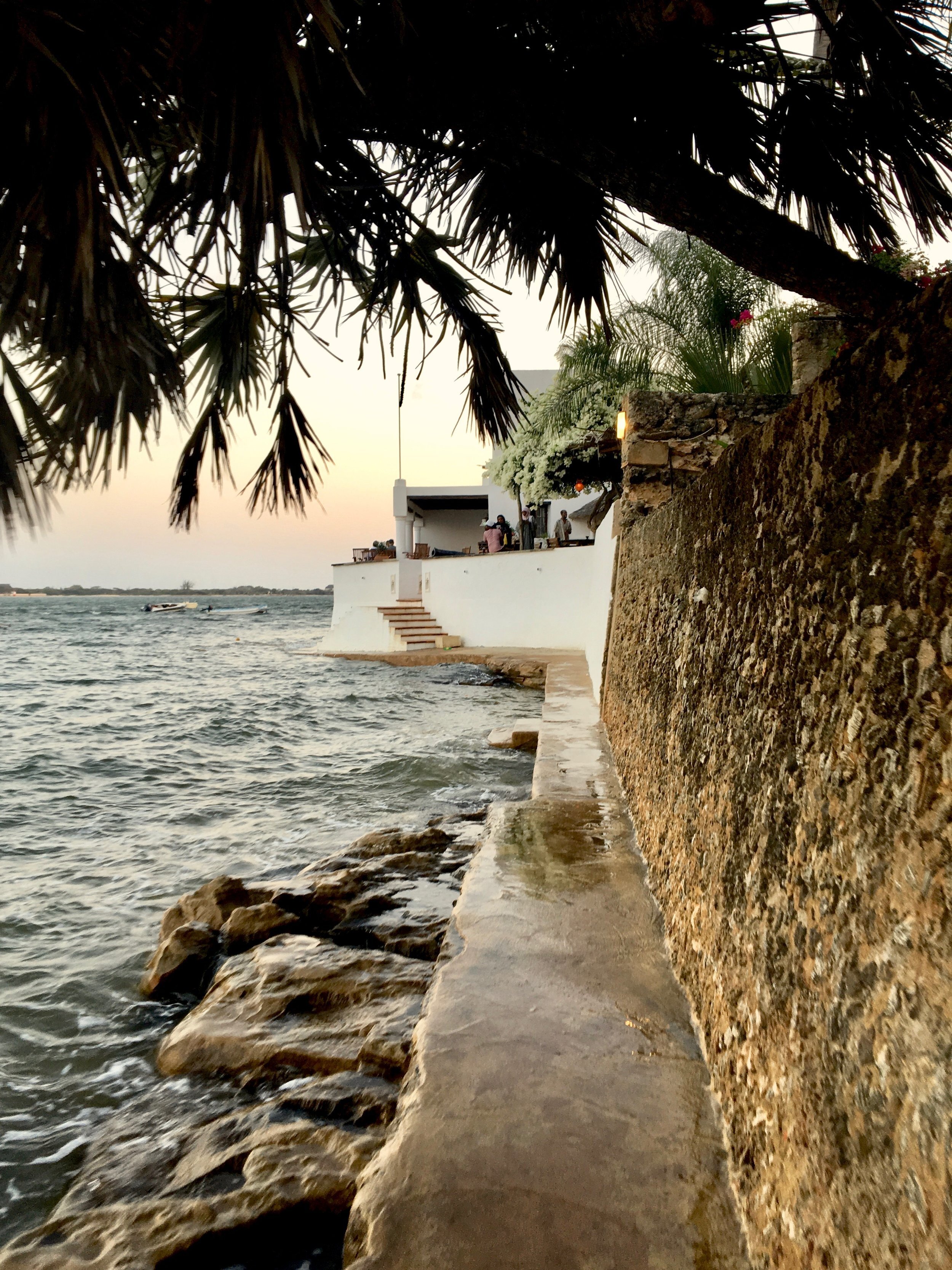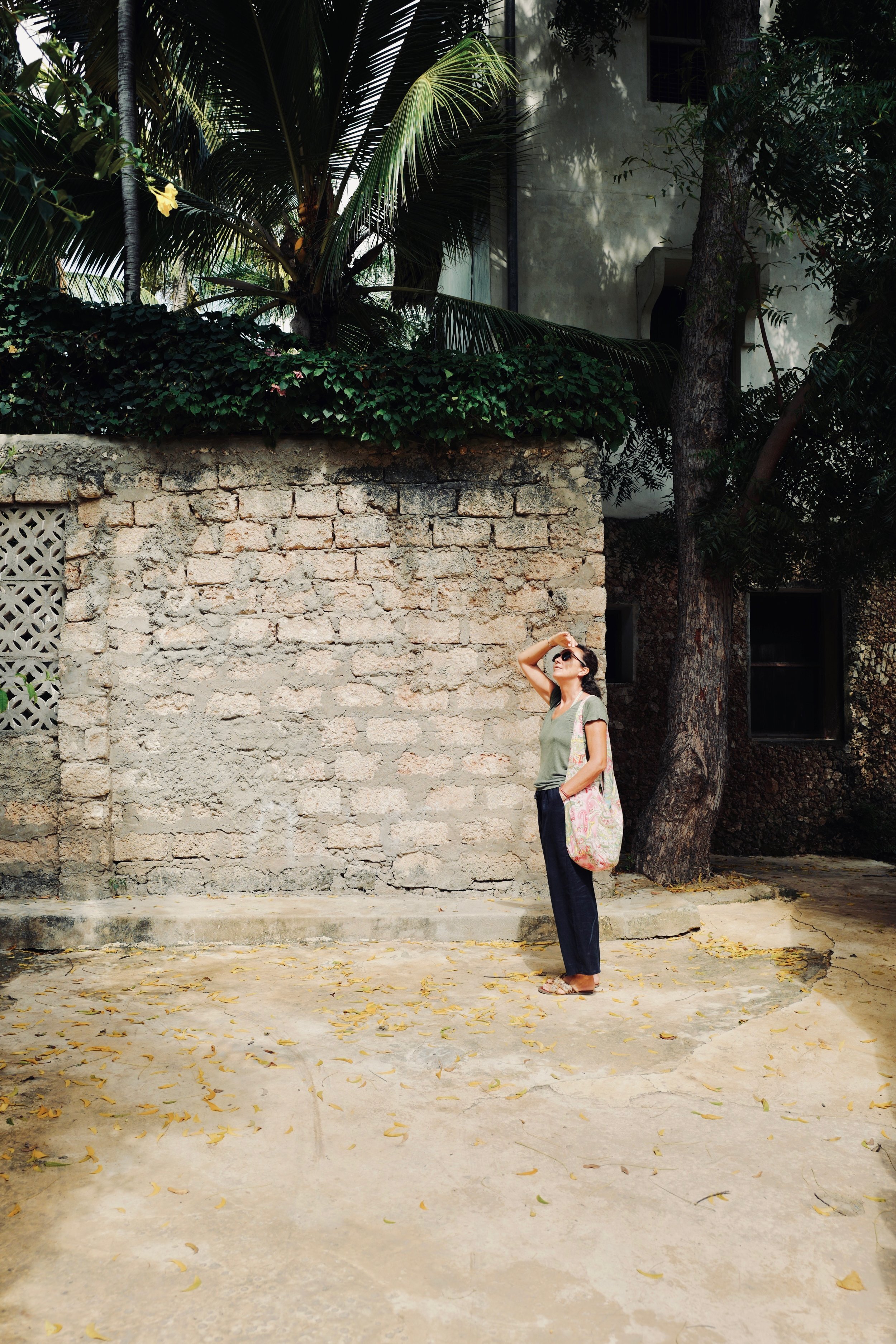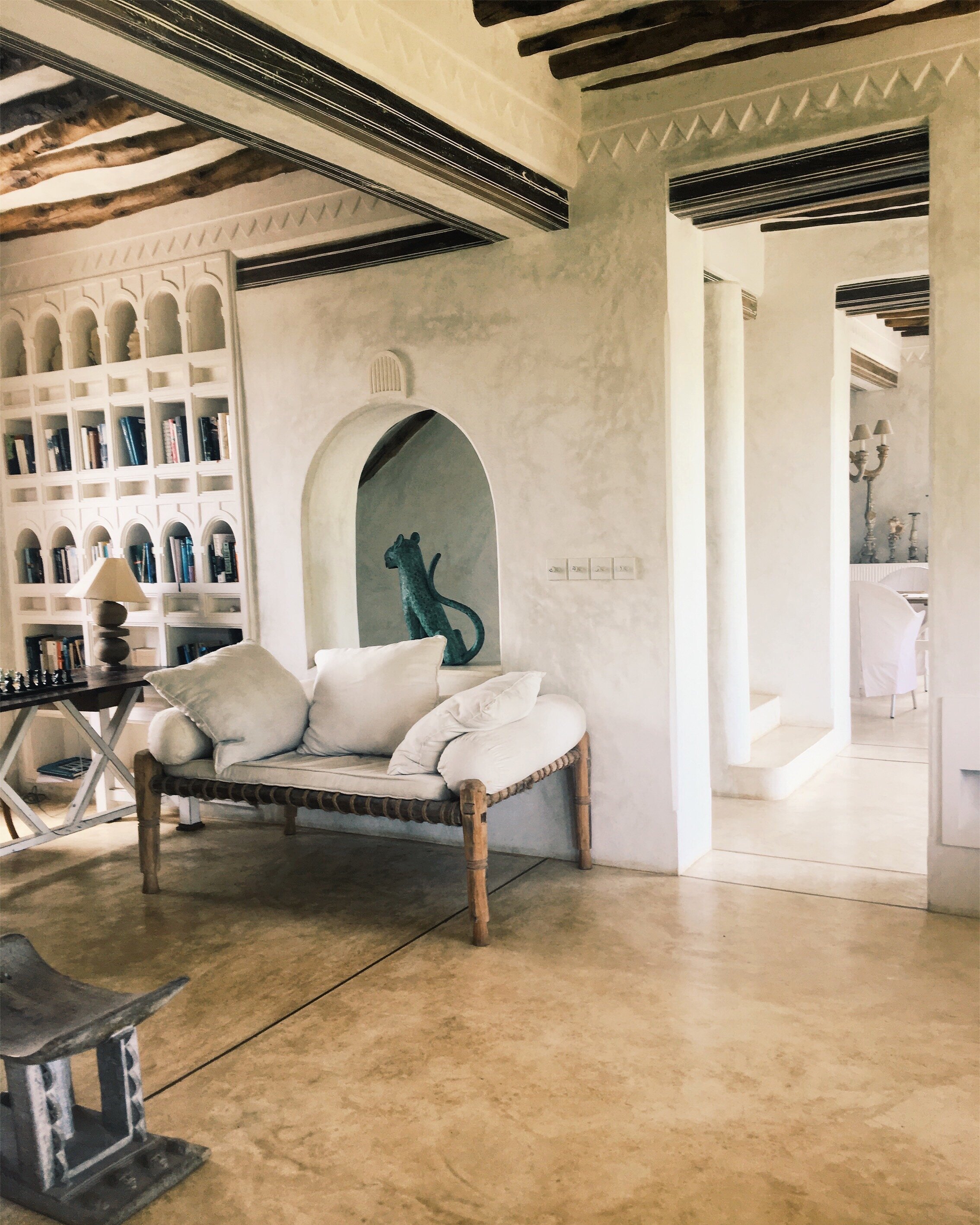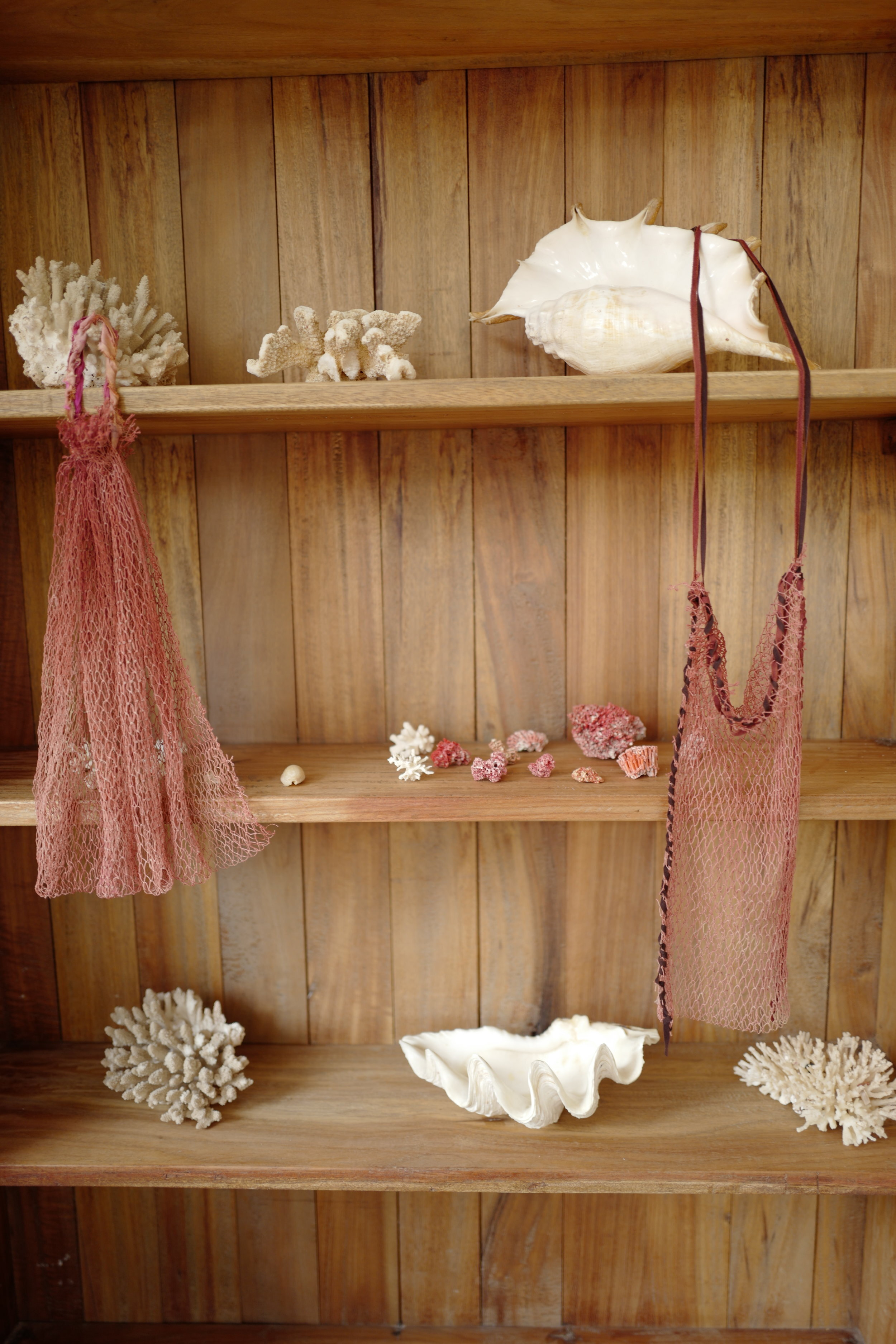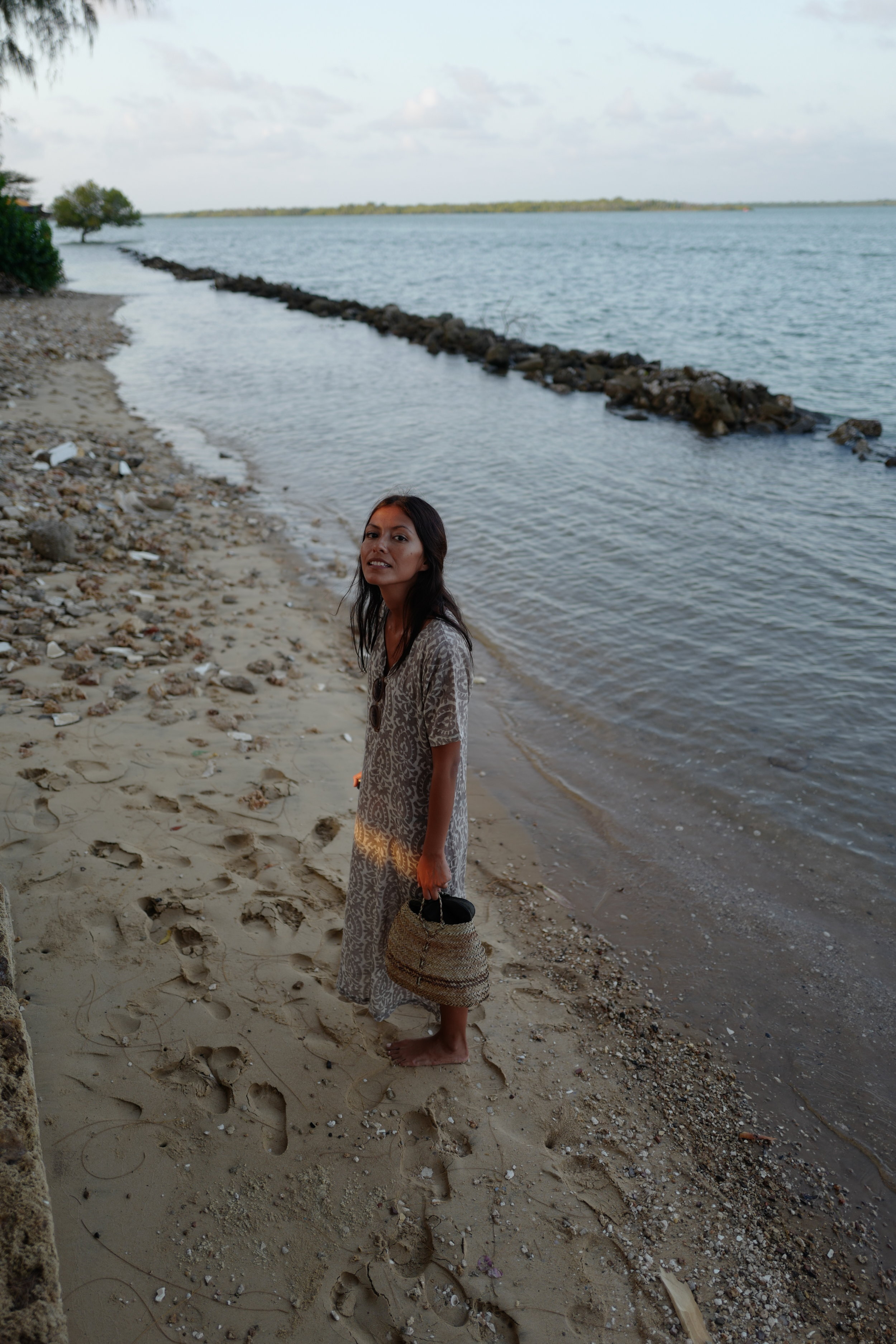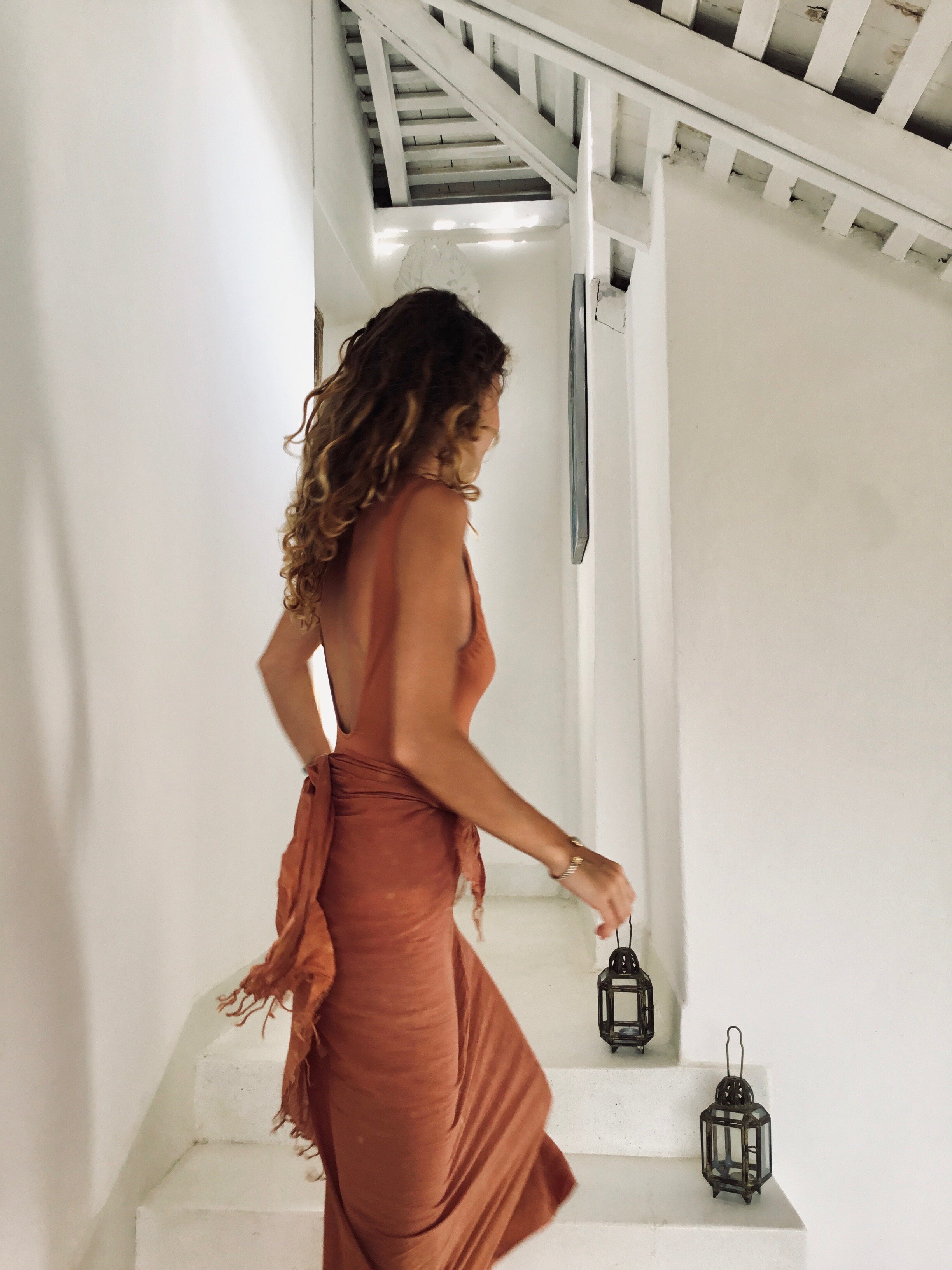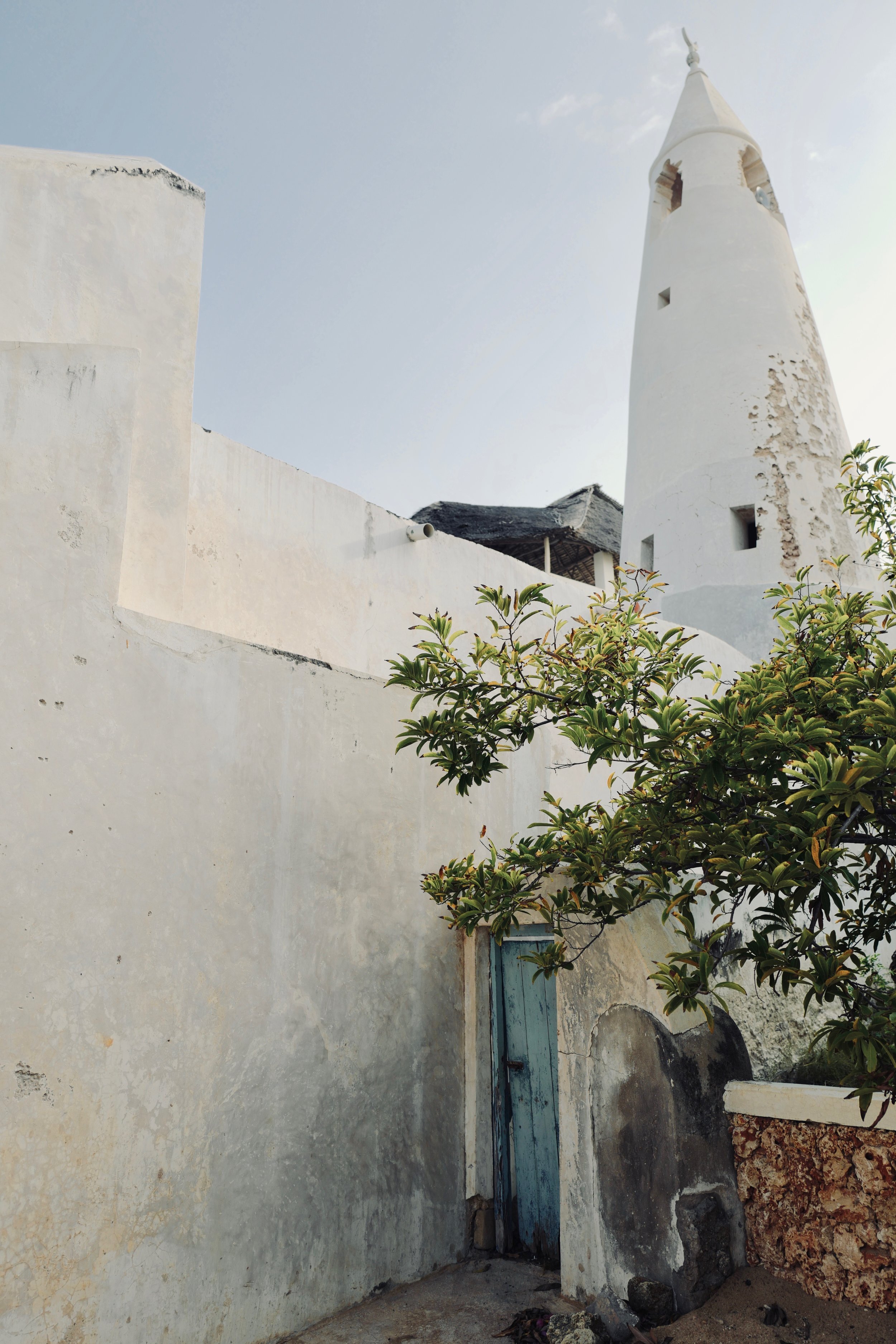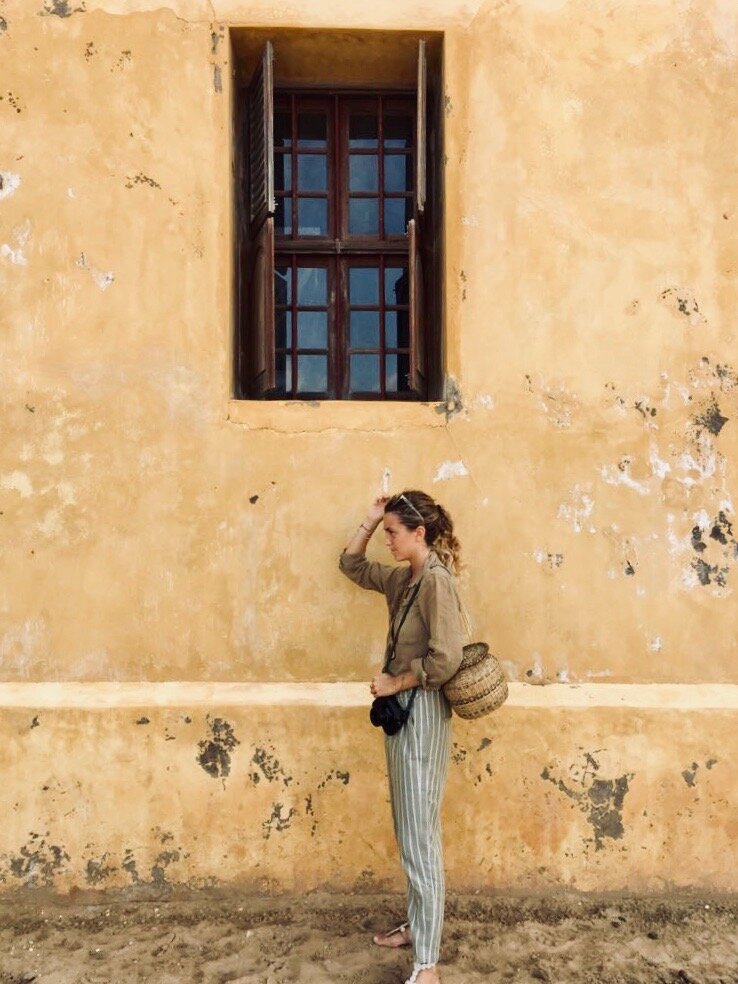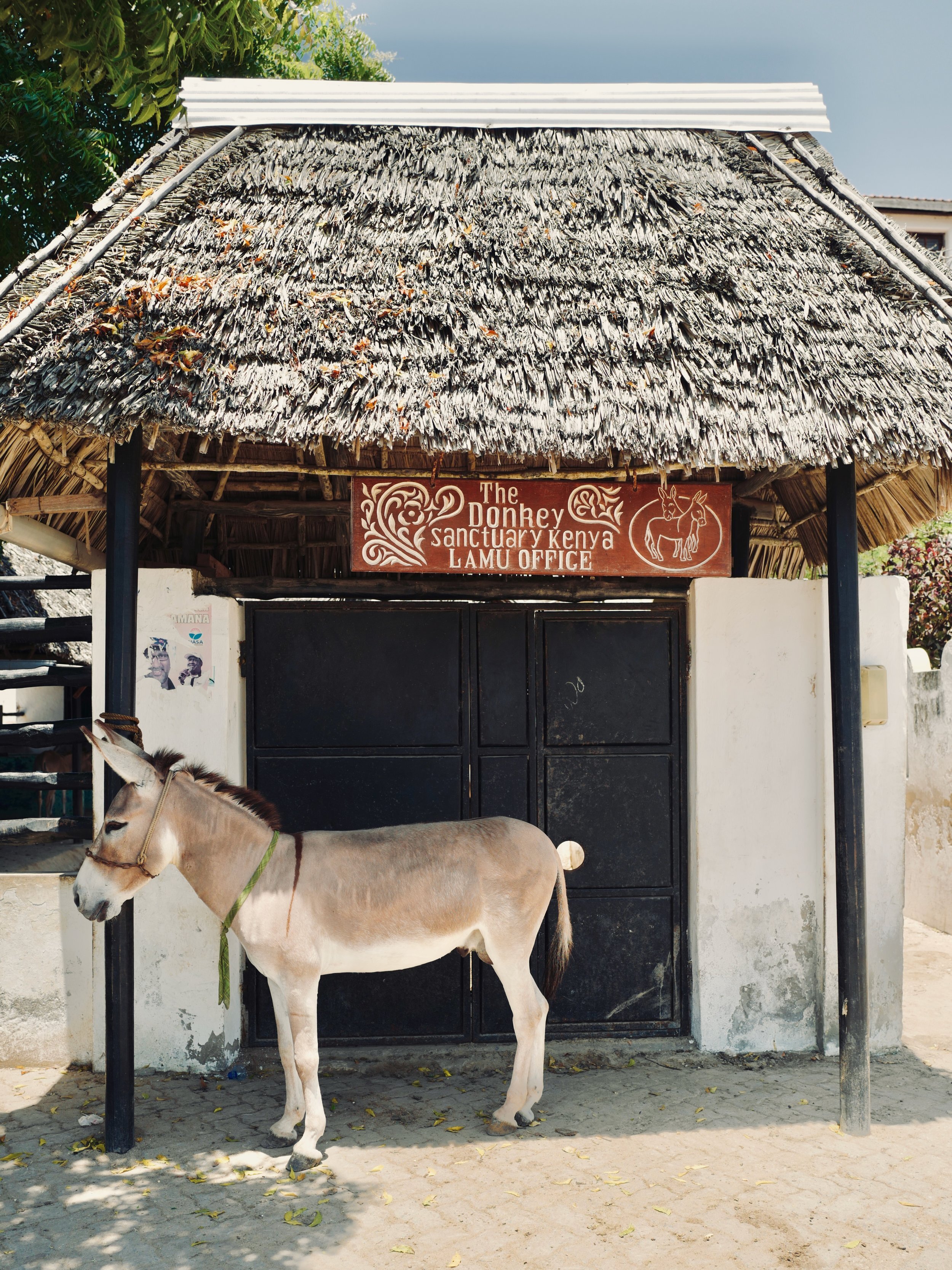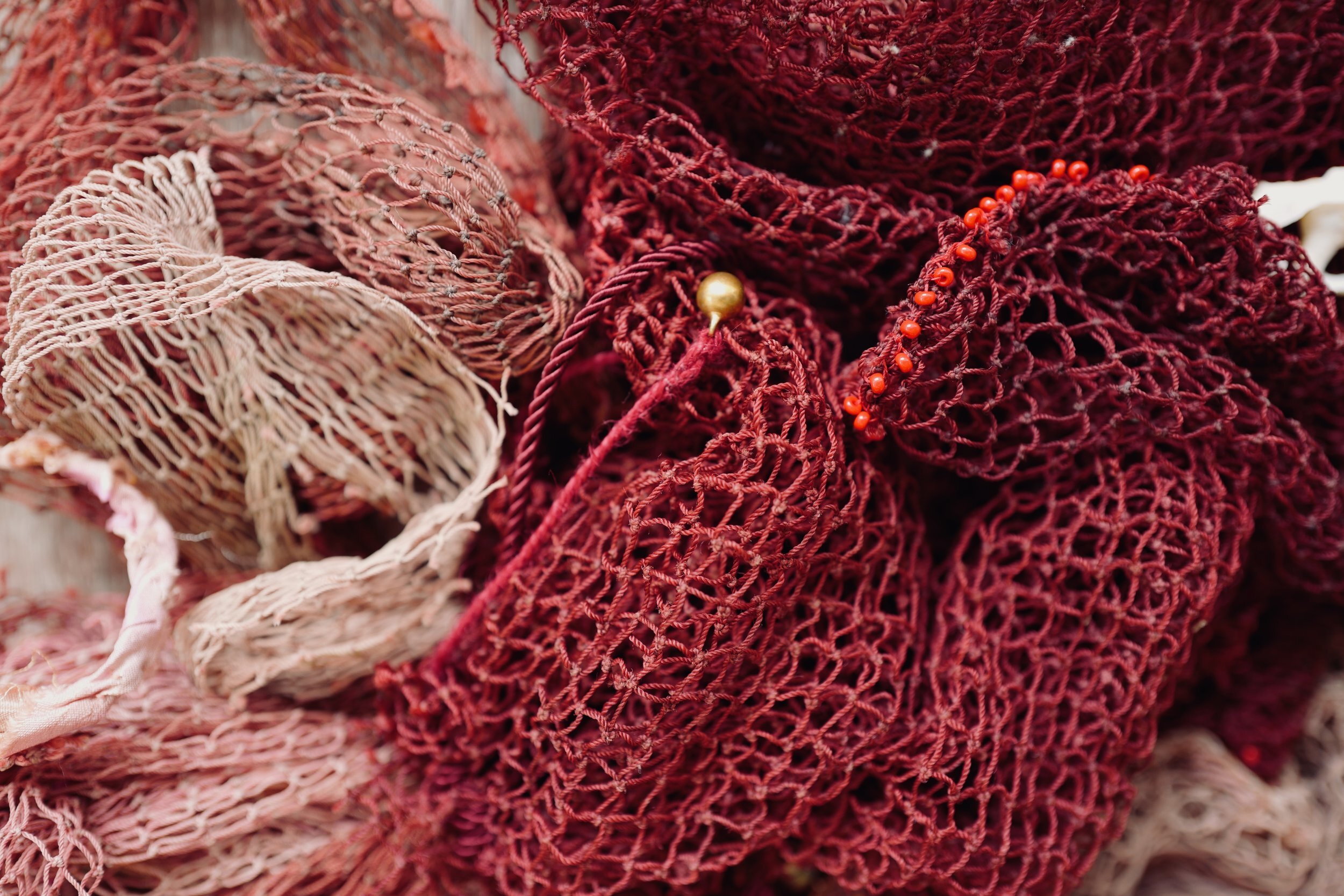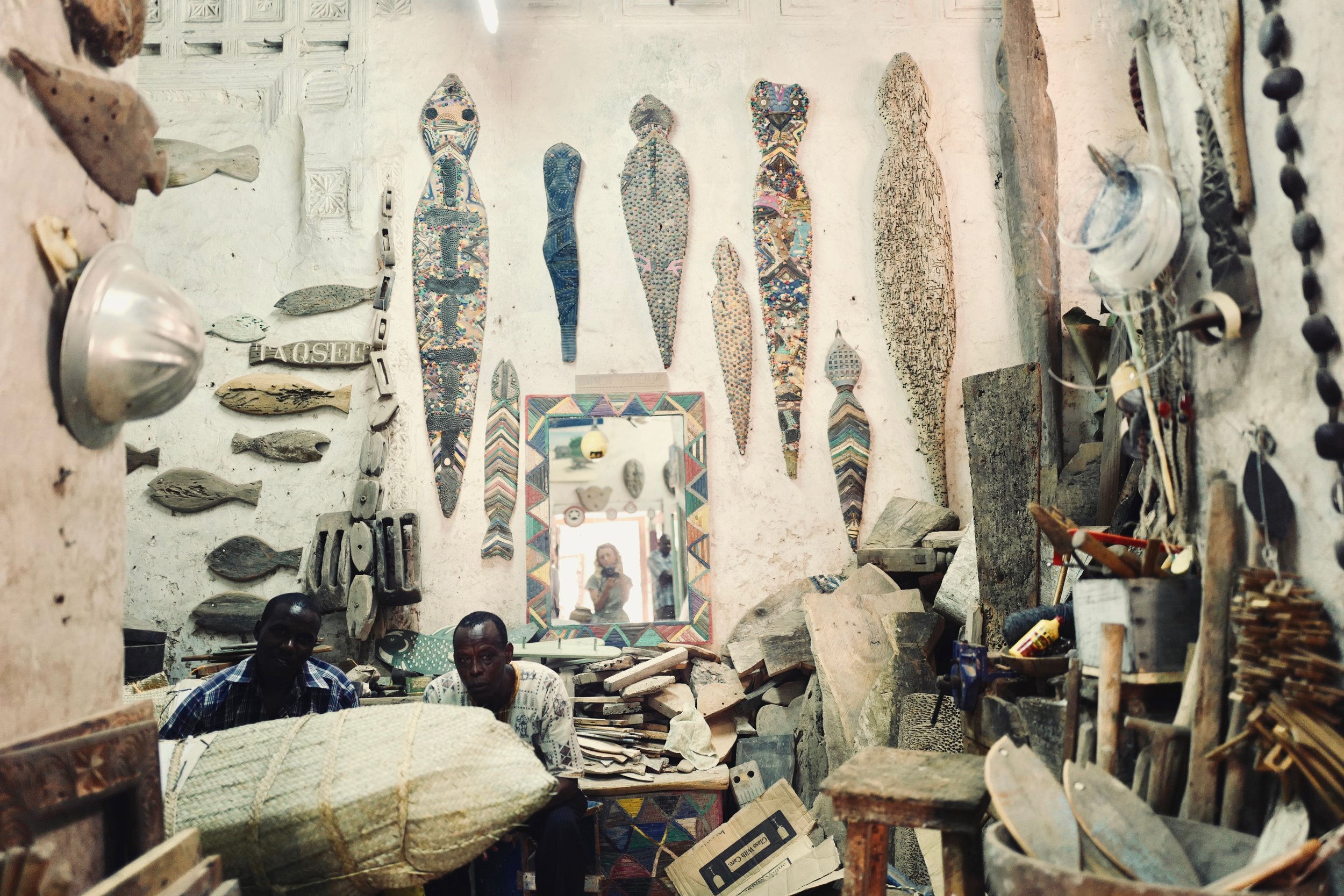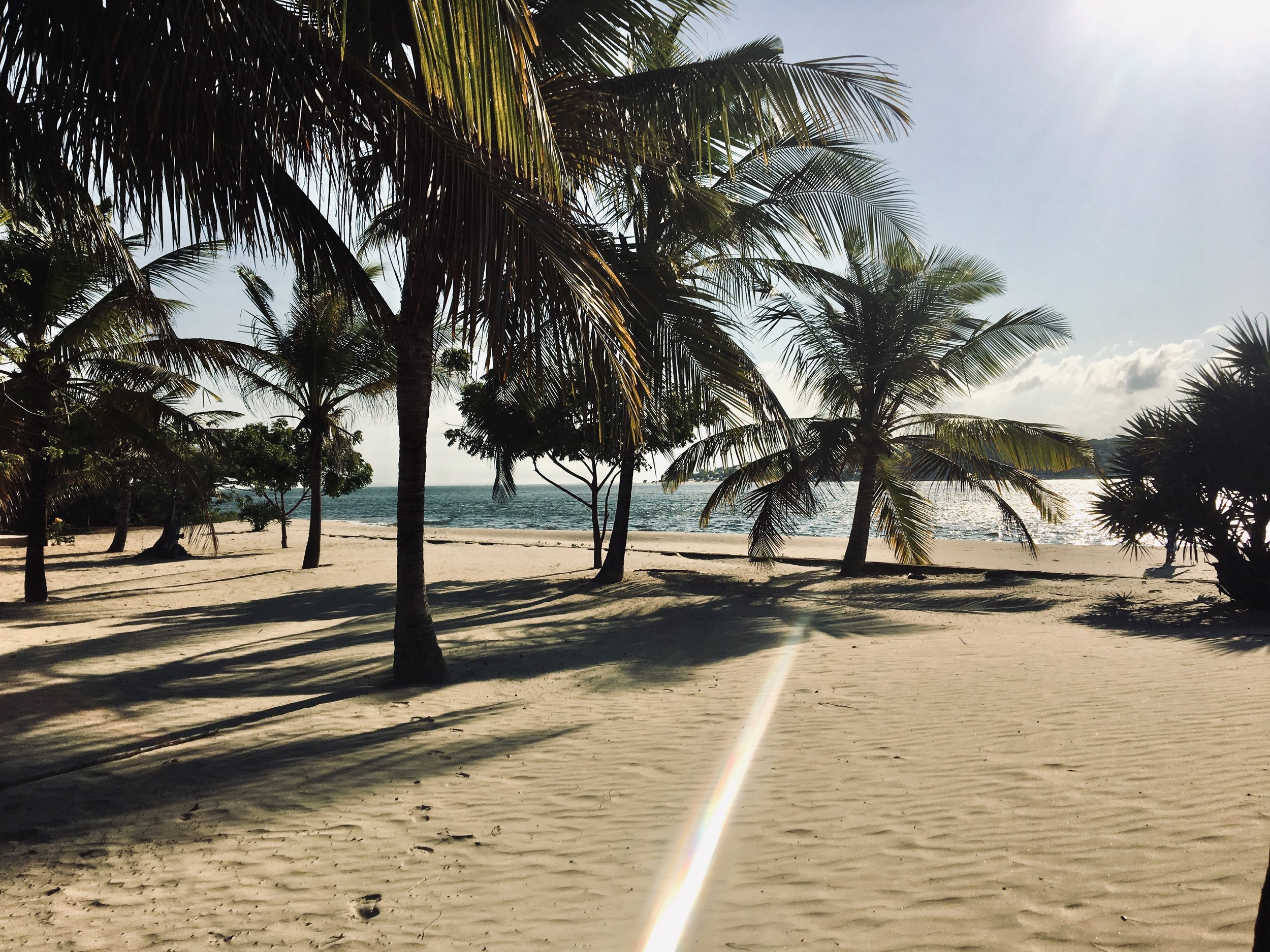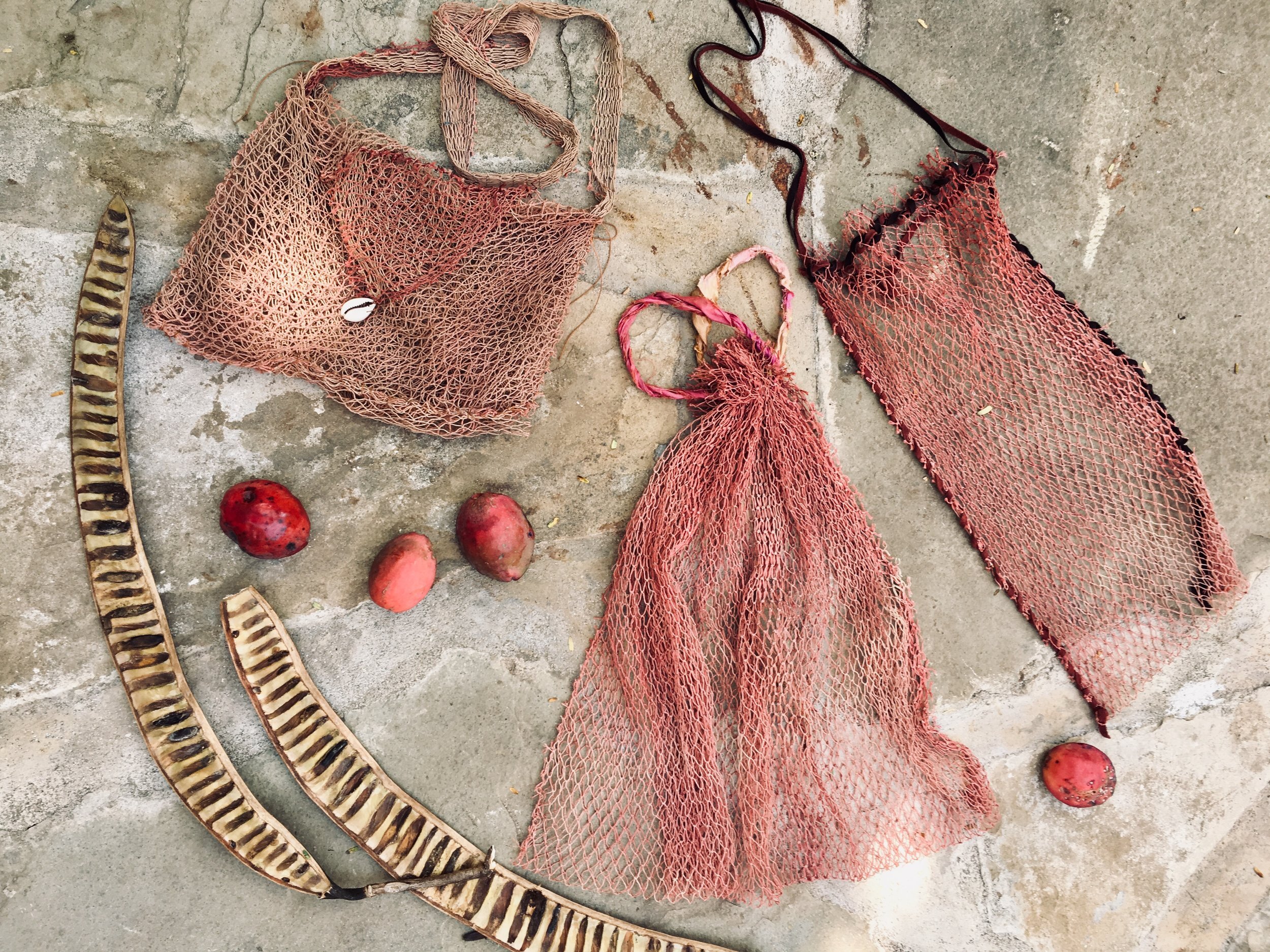Inside The Palmist's Clementina Calleri trip to Lamu, Kenya
Clementina Calleri, Founder and Designer of Milan-based brand The Palmist shares her guide to discovering Lamu, Kenya like a local. Deeply inspired by her travels, Calleri is constantly researching beauty in every aspect of her life, while supporting local people through craftsmanship.
Read below to explore Lamu through the eyes of Clementina.
What drew you to Lamu?
Going to the Northern Samburu District for my family charity project since 2008 and working as a Lodge manager in 2013, the stories and legends about this island were numerous and intriguing, I finally visited Lamu in 2014 and have been going back ever since.
Why is it the perfect destination?
Lamu is a real mix of cultures, smells, people. A UNESCO World Heritage Site, Lamu is divided into two very different realities. The Old town, the local market invades your spirit with magic, its merchants are peculiar personalities, some seem to have arrived from a far-far journey. The spices, the exotic fruits, the light coming from striped curtains, all of the experience is unique. Walking around Lamu town, you’ll find never-before-seen places such as a hospital for donkeys, the island’s public transports.
A short boat ride south you’ll get to Shela, the more curated side of the island. The houses are white with beautiful greenness surrounding them, you pass by tiny supermarkets, as they call them, with fruits sold in baskets and tea in terracotta pots. Walking on the beach towards Shela Fort, you’ll have the majestic view of Manda bay.
This island radiates a very special energy, it is close to the border with Somalia, which can be dangerous (some say), however a mixture of Kenyans, Indians, English, Italians all share this island as their home. When you visit it for the first time you feel somehow magnetized to its energy, to the perfumes and the light touching the white sails of the dhows crossing before your eyes; when you visit Lamu for the very first time, you can be sure it won’t be the last.
We should go with…
My mother took me to Lamu for the first time, then went back countless times with groups of friends, and with my boyfriend for a romantic escape after our time in Wamba (Samburu district) with the children’s programme.
Where to wake up?
To me Shela is the place to stay in Lamu. It is where I love to wake up, it’s where I always have been staying. In Shela then, Forodhani House. Alternatively, on airbnb I once rented the Bembea House, very beautiful decors and adorable staff who took care of us like kings and queens. Flying to Lamu with a group of friends for (let’s say) NYE? checking-in at Fort Lamu is a great option. Apart from being a beautiful structure, it is located on the south of Shela beach, perfect place to create your own party, but also to quietly recover from one-too-many gin-tonics from the night before.
How about breakfast?
Your home or the Peponi Hotel. Otherwise if your morning plan is to visit the market head to Lamu House for a lovely breakfast in the Old town.
When should art lovers go?
Art lovers should visit Lamu around mid-February as every year there is the Shela Hat Contest, where the headpieces created with recycled plastic from the sea as well as natural elements found on the island are true pieces of art.
How about fashion lovers? Any shopping we shouldn’t miss?
In Shela, the ultimate luxury barefoot-shopping is at the famous Aman by Sandy Bornman, kaftans are exquisitely made and the boutique itself is beautifully curated. Or visit Isiah’s wooden workshop “LULU” in Lamu town, near the market, and bring home a hand-carved fish.
Your all time favorite restaurant for lunch?
Iconic Peponi Hotel for lunch [located in Shela, so after your lovely lunch head to the beach for an afternoon siesta] but also for my favourite gin-tonic after dinner. The Peponi was inaugurated back in 1967, it is a special place as it has managed to keep its charming atmosphere although becoming the meeting point en vogue for many cool vagabonds coming and going from the mainland to the island.
Where do we watch the sunset?
Have a delicious Bloody Mary at the Majilis Hotel on Manda Bay watching the sun disappearing on the horizon - come back with a dhow ride to Shela for dinner.
Where do we go for dinner?
Baitil Aman. The atmosphere is warm and the food is delicious. They light up thousands of candles and suddenly you will feel like living in a fairytale.
Something that surprised you?
The beautiful plane ride with blue and green views of the coast, landing on Manda and your first “taxi” ride to Lamu island. The minute you set foot onto the first boat that takes you to the island your energy turns electric and your eyes are filled with beauty! Enjoy every moment of it, in my opinion it is one of those very special spots you’ll forever be drawn to be returning to.
Something only a local would know?
Dhow race. Not just watch it, that we can all do. Try to be a part of it.
How were you inspired by this destination for The Palmist?
Everything about Kenya inspired me to start the palmist. It started with collecting fishing nets, turning them into lightweight bags for a good cause: buying a bag means allowing one more child to continue education at the age of 7 after leaving my family’s Community School. It is a project launched to raise funds for the Calleri Early Child Development Centre, that then evolved into a life adventure reflecting my passion for natural fibres and textiles. The Club Lumière lampshades are made in collaboration with an artisan named Paul in Kenya and I will soon be starting a new collection of vases using dried banana leaves and coconut cords. Lamu is a sensational place to find inspiration, everything about it pushes your creativity towards innovation. The makuti ceilings, the sand color floors, the palm trees; the island’s architecture is simple yet so recognizable. I hope to find some time, some day, to instaure a tiny studio and create a collection dedicated to the magic of Lamu.
Lamu’s best kept secret?
“Pole Pole!”[take it slow]. Lamu moves at a slow pace, the best way to discover it is by walking around and talking to the local people. Everyone is very nice, some young boys will try to sell you some fish or take you on their dhow for a private tour, you will have encounters with donkeys chilling on the streets, it is a little bit like going back in time but somewhere you had never been before.
Any other spot we shouldn’t miss?
Dhow cruise around the mangrove forest to be done only between December and February as the turquoise waters become transparent and you can snorkel with exotic colourful fishes.

